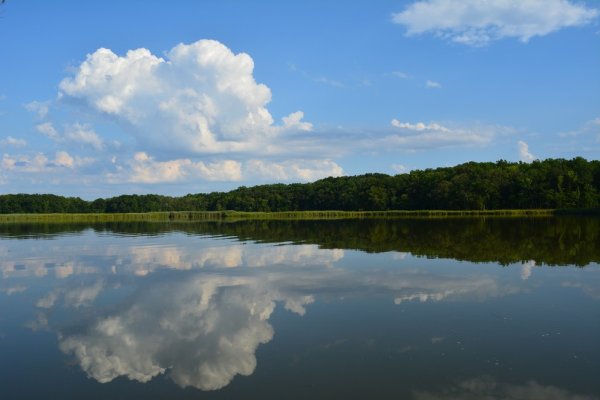Lanternfly's attraction to vertical silhouettes could help monitor, trap it
| psu.edu
Like moths to a flame, spotted lanternflies are visually drawn toward and seemingly captivated by vertical objects such as utility poles, a behavior that could be valuable in predicting where the pests might be heading, according to entomologists in Penn State’s College of Agricultural Sciences.
Researchers ask anglers' help with study of brook, brown trout colors, patterns
| psu.edu
Penn State researchers, who are evaluating the colors, pattern variations and genetics of wild brook and brown trout across Pennsylvania, are asking anglers to help with their study.
Seminar to discuss landscape diversity, food sovereignty in Indigenous Australia
| news.psu.edu
Rebecca Bird, professor of anthropology at Penn State, will discuss the importance of controlled burning as a way for Indigenous communities to increase dietary quality and foster environmental justice and autonomy during a seminar at 11:15 a.m. March 24.
EarthTalks: Chief sustainability officer to discuss initiatives at Penn State
| news.psu.edu
Paul Shrivastava, chief sustainability officer, director of the Sustainability Institute and professor of management at Penn State, will discuss how Penn State is attempting to institutionalize sustainability at the University, in Pennsylvania and around the world, at a talk on March 29.
What’s the hype about 5.8%? I’m worried about the other 94.2%
| by Erica Smithwick
A recent analysis by the International Energy Agency (IEA) concluded that annual carbon emissions declined by 5.8% in 2020 because of the COVID-19 global pandemic. From a historical perspective, a 5.8% reduction is huge—nothing like it has occurred in our lifetimes. But from a COVID-19 perspective, how can it be so small?
EarthTalks series examines design of buildings, cities to avoid global hothouse
| news.psu.edu
Lisa Iulo, associate professor of architecture and director of the Hamer Center for Community Design at Penn State, will discuss strategies for designing the built environment across scales and systems to avoid a global hothouse at 4 p.m. Monday, March 22.
CESU workshop to highlight opportunities to work with federal agencies
| news.psu.edu
Researchers whose work addresses natural and cultural resource management topics can learn about partnering opportunities with federal agencies at the Cooperative Ecosystem Studies Units Program Workshop on March 30.
EarthTalks series examines climate ethics, social systems and human health
| news.psu.edu
Mark Sentesy, assistant professor of philosophy and classics and ancient Mediterranean studies at Penn State, will discuss the ethics of climate change on Monday, March 15.
Materials Research Institute announces seed grant recipients
| news.psu.edu
The Penn State Materials Research Institute announces seed grant recipients for 2021, grants designed to foster interdisciplinary research at Penn State.
NASA’s ICESat-2 satellite reveals shape, depth of Antarctic ice shelf fractures
| news.psu.edu
When a block of ice the size of Houston, Texas, broke off from East Antarctica’s Amery Ice Shelf in 2019, scientists had anticipated the calving event, but not exactly where it would happen. Now, satellite data can help scientists measure the depth and shape of ice shelf fractures to better predict when and where calving events will occur.
2021 Colloquium on the Environment to feature 'father of environmental justice'
| news.psu.edu
Renowned scholar and activist Robert Bullard will present the virtual keynote talk at Penn State’s 2021 Colloquium on the Environment on April 1. Bullard, who studies how environmental issues disproportionately impact communities of color, will discuss “The Quest for Environmental and Climate Justice in the U.S.”
Wolf social group dynamics matter for infectious disease spread, models suggest
| psu.edu
By modeling wolves in Yellowstone National Park, researchers have discovered that how a population is organized into social groups affects the spread of infectious diseases within the population. The findings may be applicable to any social species and could be useful in the protection of endangered species that suffer from disease outbreaks.












